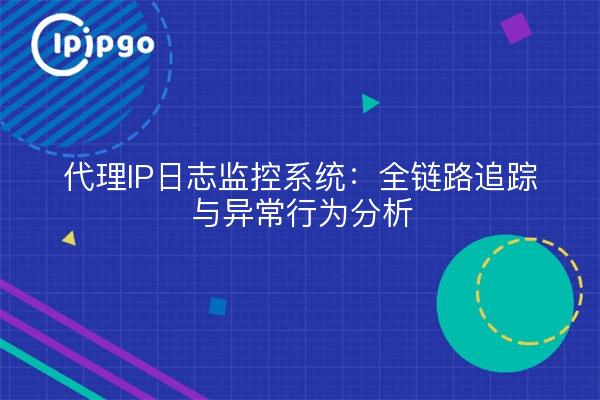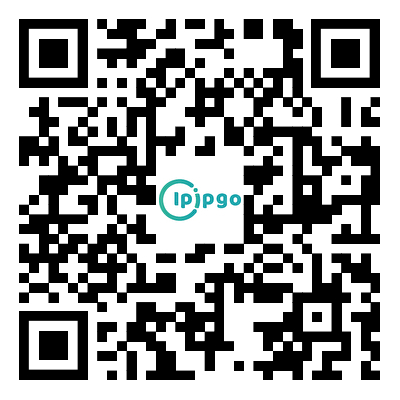
Core Value of Proxy IP Log Monitoring System
In the process of using proxy IP services, enterprises often face two major pain points: the inability to trace the link of IP usage, and the difficulty of identifying abnormal operational behavior. An e-commerce company once failed to detect the abuse of proxy IP by a crawler program in time, resulting in the core business IP being blocked for 72 hours - a typical incident caused by the lack of a log monitoring system.
pass (a bill or inspection etc)full-link traceabilityThe complete lifecycle of each proxy IP can be accurately tracked: from IP assignment, user authentication, request routing to final release. Combined withAbnormal Behavior Analysismodule, the system can automatically identify 20+ risk features such as high-frequency switching, protocol anomalies, and sudden changes in traffic, which improves efficiency by 400% compared with traditional manual inspection.
Four steps to build a log monitoring system
Step 1: Establish a log collection specification
It is recommended to build the log structure by five elements: time, user ID, proxy IP, destination address, and response status. Use ipipgo's API interface to directly obtain the proxy IP'sGeolocation tabrespond in singinglife cycle state, providing metadata support for subsequent analysis.
Step 2: Design a tracking marking system
Create a unique TraceID for each proxy IP session, to pass through the entire process of request forwarding, data processing, and response return. When using ipipgo'sLong-life static IPIt is recommended to overlay the user ID + date to generate a composite logo for easy tracking across days.
Step 3: Deploy a real-time analytics engine
A streaming computing framework is recommended for processing log streams, focusing on monitoring three types of metrics:
- Fluctuation of request volume per unit time > 300%
- Single IP concurrent connections > 50
- Percentage of non-conventional protocol requests >15%
Step 4: Build an early warning and disposal mechanism
Set up a multi-level response policy:
Primary alerts automatically block abnormal IP usage privileges
Intermediate Alert Freeze Account API Call Privileges
Advanced alerts trigger manual verification of work orders
Technical Adaptation Program for ipipgo
For log monitoring scenarios, ipipgo provides three featured technical supports:
| functional module | implementation method |
|---|---|
| IP metadata acquisition | Real-time querying of IP's ASN, city, carrier, etc. via APIs |
| Notification of status changes | Webhook pushes status changes such as IP failures, locale switches, etc. |
| Flow Fingerprinting | SDK automatically generates unique identifiers for devices + network environments |
When an IP is detected to have more than 5 carrier changes within half an hour, the system can automatically correlate ipipgo'sResidential IP Quality Detection InterfaceThe system will verify whether it is caused by dynamic allocation by the operator to avoid misjudging the quality IP resources.
Typical Scenario Response Strategies
Case 1: Crawler Program Abuse Detection
An IP initiates 2000 GET requests to the same destination address within 10 minutes, which is automatically triggered by the system:
1. Freeze all proxy IPs of the user in transit.
2. Access to ipipgoProtocol Usage LogValidating Request Characteristics
3. Retention of samples of anomalous flows for audit trails
Case 2: Compliance audit of cross-border operations
With the help of ipipgo'sNational/regional IP poolsIn addition, organizations can quickly export IP usage reports for specific regions, automatically matching local data privacy regulation requirements and reducing audit preparation time from 3 days to 2 hours.
Frequently Asked Questions QA
Q: How do I handle too much logging?
A: ipipgo is recommendedIntelligent Routing Function, storing logs in streams by business type. Core business logs are retained for 180 days and test environment logs are retained for 7 days.
Q: How to distinguish between normal switching and abnormal behavior?
A: via ipipgo'sIP Survival Cycle MonitoringThe modeling is based on the user's historical usage habits. For example, if a user's daily switching frequency is 15 times/hour and suddenly increases to 200 times/hour, it will trigger a warning.
Q: Does the system require real-time monitoring?
A: RecommendedHierarchical monitoring strategy: Basic metrics (e.g., online status, traffic thresholds) need to be processed in real time, and complex analysis (e.g., correlated behavioral patterns) can be processed in T+1 batches.
By combining ipipgo'sGlobal IP RepositoryDeeply integrated with the log monitoring system, enterprises can not only achieve risk prevention and control forward, but also optimize the use of proxy IP strategy based on data analysis. It providesMulti-protocol supportcharacteristics, especially suitable for mixed business scenarios that require simultaneous processing of HTTP, SOCKS5 and other different protocol traffic.








